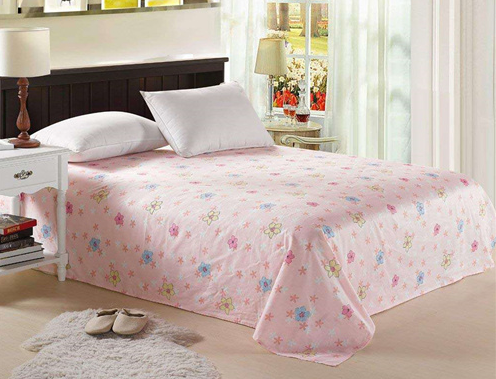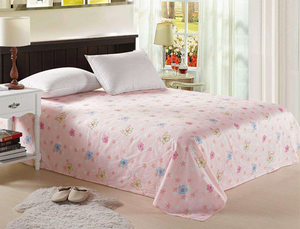
Detailed Explanation of Bed Sheet Inspection Standards and Procedures Inspection Services for Warehousing and Factory Audits
Bed sheets, as an important household textile product with both practical functions and decorative attributes, their quality directly affects the user experience and brand reputation of consumers. During the inspection, factory verification, and product certification processes of bed sheets, implementing a set of scientific and rigorous standards is of vital importance. This article will systematically elaborate on the inspection standards and operation procedures of bed sheets, providing professional basis for your quality control work.
I. Purpose of Inspection and Scope of Application
Purpose of Inspection: To clearly define the inspection methods and criteria for determining qualification of the bed sheets, ensuring that the product quality complies with the established standards during the inspection and factory inspection processes, and meets the requirements of customers and market certifications.
Scope of application: This specification is applicable to the quality assessment and certification during the incoming inspection, outgoing inspection, and factory audit of all types of bed sheets in terms of materials and manufacturing processes.
II. Inspection Contents and Core Standards
The inspection personnel shall conduct a systematic inspection of the products based on the following standards and items.
(1) Basis for Inspection and Certification
All inspection items must meet the technical requirements of Grade A in the FZ/T 62007-2003 "Bed Sheets" standard and comply with the provisions of relevant process documents.
(2) Detailed Inspection Items and Standards
Fabric quality inspection
Appearance defects: No damage, pinholes, color stains or dirt are allowed. Minor linear and block-shaped defects are permitted, with one occurrence per surface.
Deviation of latitude / deviation of flower pattern: ≤ 2%.
Color variations and color differences: The color variations within the same piece and the color differences between pieces are all no less than grade 4.
Internal Quality Certification:
Washing dimensional change rate: within ±2.5%.
Fabric breaking strength: ≥ 250N.
Fastness: Wash fastness ≥ 4 grades, dry rubbing fastness ≥ 4 grades, wet rubbing fastness ≥ 3 grades, saliva/sweat fastness ≥ 3-4 grades.
Safety certification item: No abnormal odor, formaldehyde content ≤ 75mg/kg, pH value between 5.0 and 7.5, and decomposition aromatic amine dyes must not be used.
Pattern and quilting quality inspection
Pattern: The composition is complete and aesthetically pleasing. The overall deviation of large items (≥100cm) is ≤2cm, and for small items (<100cm), it is ≤1cm.
Overlock stitching: The stitching lines are smooth and continuous without any wrinkles or folds; the starting and ending points are reinforced with additional stitches, leaving no excess thread; the stitches are evenly and neatly arranged.
Seam stitching inspection
Sewing needle quality: No jumping needles, floating needles, missing needles or broken threads; needle deviation error ≤ 0.2 cm / 20 cm.
Sewing quality: The stitches are even, straight and strong; the stitches at the joined areas are properly aligned, and 1 cm of backstitching is done at the edge; the density of the stitches should comply with the process standards (for example, 12-15 stitches per 3 cm for straight sewing).
Quality inspection of embroidery (if applicable)
Follow the "five-character principle" of "flat, straight, uniform, smooth, and clean", requiring the embroidery surface to be smooth, the outline to be neat, the stitches to be uniform, the needle movements to be smooth, and the picture to be clean. The attached embroidery and sprayed embroidery should be positioned accurately without significant flaws.
Inspection of Labels and Packaging
Label: The trademark content must be consistent with the product. The durable wash label must include three mandatory pieces of information: specifications, fiber composition, and washing instructions. This is a basic requirement for product certification.
Specification and size: The deviation rate of the finished product size is controlled within -2%.
III. Inspection Methods, Tools and Criteria
(1) Inspection Methods
Place the items to be inspected flat on the inspection table. Gently smooth them out to ensure no tension. Use a tape measure to measure the dimensions at 1/4 and 3/4 of the length and width of the product, accurate to millimeters. Qualified products should be classified and placed separately, and corresponding certification labels should be affixed.
(2) Testing tools
Standard tape measure, small scissors.
(III) Inspection and Verification Criteria
Single-item determination: If all the inspection items meet the requirements of first-grade products, it will be classified as the first grade; if any one item does not meet the requirements, it will be downgraded.
Batch determination (AQL sampling):
The quality grade of the entire batch of products is determined based on the lowest grade among the sampling inspection results of the internal quality, appearance quality and process quality.
According to the sampling plan, if the number of non-conforming products in the sample is less than or equal to the acceptance number (Ac), then the inspection batch is judged as qualified; if the number of non-conforming products is greater than or equal to the rejection number (Re), then the inspection batch is judged as unqualified. This is the common judgment criterion in factory inspection.
By implementing the above comprehensive inspection process, enterprises can effectively control the quality of bed sheets, laying a solid foundation for successfully passing customer inspection and market supervision certification.
Share this product

Detailed Explanation of Bed Sheet Inspection Standards and Procedures
Bed sheets, as an important type of home textile product, their quality directly affects the user experience and brand reputation of consumers.
